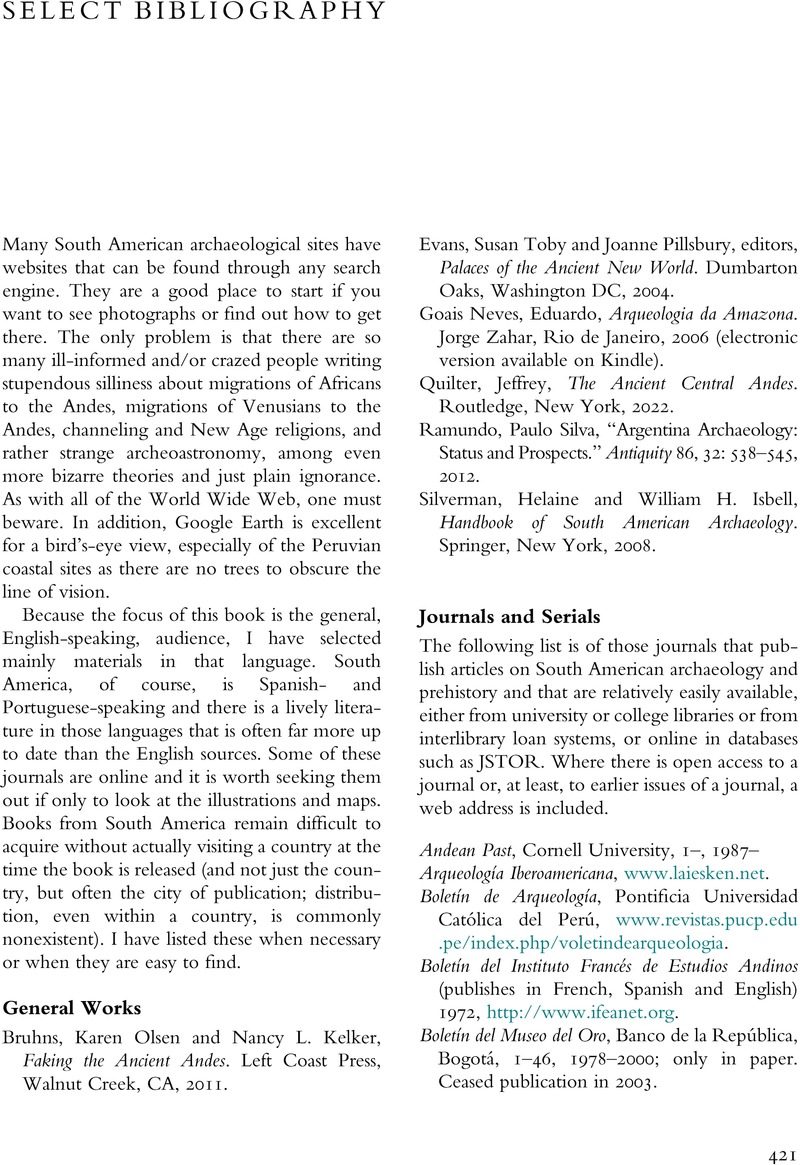Book contents
- Ancient South America
- Ancient South America
- Copyright page
- Dedication
- Contents
- Figures
- Preface
- Acknowledgments
- Chapter 1 Still a New World
- Chapter 2 A Matter of Time
- Chapter 3 The Physical Setting
- Chapter 4 The First Inhabitants: 12000–6000 BC
- Chapter 5 Settling Down: 6000–3500 BC
- Chapter 6 The Problem of Maize
- Chapter 7 Cultural Intensification in the Andes: 3500–1500 BC
- Chapter 8 Ceramics: Their Origin and Technology
- Chapter 9 The First Civilizations: 2000–200 BC
- Chapter 10 Textiles: The High Art of South America
- Chapter 11 Metallurgy
- Chapter 12 Regional Diversification and Development: 200 BC–AD 600
- Chapter 13 Iconographic Studies and South American Prehistory
- Chapter 14 Militaristic and Religious Movements in the Andes: AD 500–1000
- Chapter 15 Transport and Trade
- Chapter 16 Kingdoms, Chiefdoms, and Empires: AD 900–1438
- Chapter 17 Eastern South America and the Amazon: A New Synthesis
- Chapter 18 The Sixteenth Century: The Last Indigenous Cultures
- Chapter 19 Intercontinental Movements before Columbus
- Chapter 20 The Future of a Continent
- Select Bibliography
- Index
- References
Select Bibliography
Published online by Cambridge University Press: 10 May 2024
- Ancient South America
- Ancient South America
- Copyright page
- Dedication
- Contents
- Figures
- Preface
- Acknowledgments
- Chapter 1 Still a New World
- Chapter 2 A Matter of Time
- Chapter 3 The Physical Setting
- Chapter 4 The First Inhabitants: 12000–6000 BC
- Chapter 5 Settling Down: 6000–3500 BC
- Chapter 6 The Problem of Maize
- Chapter 7 Cultural Intensification in the Andes: 3500–1500 BC
- Chapter 8 Ceramics: Their Origin and Technology
- Chapter 9 The First Civilizations: 2000–200 BC
- Chapter 10 Textiles: The High Art of South America
- Chapter 11 Metallurgy
- Chapter 12 Regional Diversification and Development: 200 BC–AD 600
- Chapter 13 Iconographic Studies and South American Prehistory
- Chapter 14 Militaristic and Religious Movements in the Andes: AD 500–1000
- Chapter 15 Transport and Trade
- Chapter 16 Kingdoms, Chiefdoms, and Empires: AD 900–1438
- Chapter 17 Eastern South America and the Amazon: A New Synthesis
- Chapter 18 The Sixteenth Century: The Last Indigenous Cultures
- Chapter 19 Intercontinental Movements before Columbus
- Chapter 20 The Future of a Continent
- Select Bibliography
- Index
- References
Summary

- Type
- Chapter
- Information
- Ancient South America , pp. 421 - 434Publisher: Cambridge University PressPrint publication year: 2024

